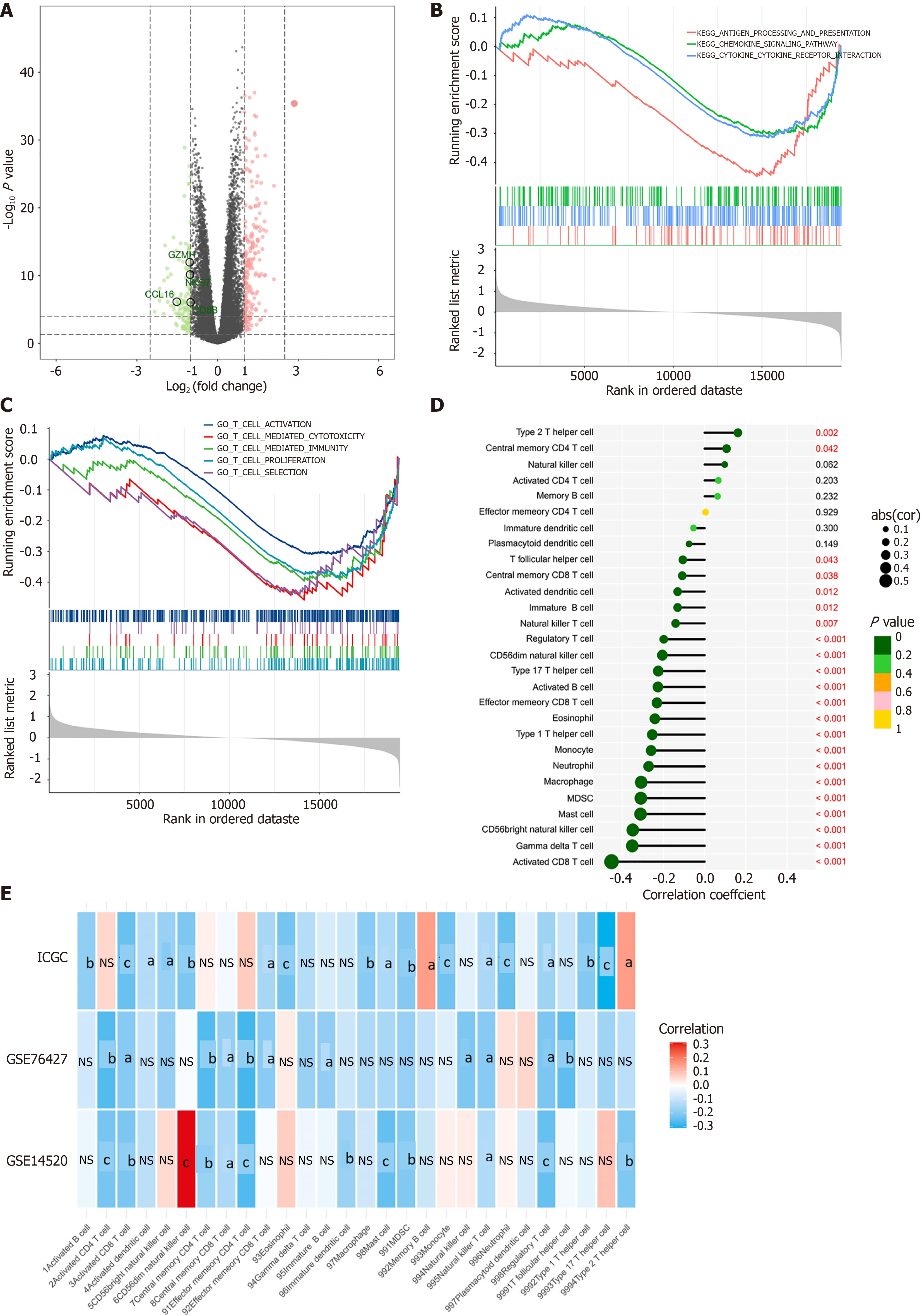Copyright
©The Author(s) 2025.
World J Gastroenterol. Jan 7, 2025; 31(1): 101198
Published online Jan 7, 2025. doi: 10.3748/wjg.v31.i1.101198
Published online Jan 7, 2025. doi: 10.3748/wjg.v31.i1.101198
Figure 8 ASH1L promotes an immunosuppressive microenvironment in hepatocellular carcinoma.
A: Volcano plot of differentially expressed genes between high and low ASH1L groups; B: Kyoto encyclopedia of genes and genomes; C: Gene ontology pathway enrichment between high and low ASH1L groups; D: Correlation between ASH1L expression and 28 immune cell infiltration in the cancer genome atlas-liver hepatocellular carcinoma; E: Correlation between ASH1L expression and 28 immune cell infiltration in international cancer genome consortium, GSE76427 and GSE14520. MDSC: Myeloid-derived suppressor cell; GO: Gene ontology; KEGG: Kyoto encyclopedia of genes and genomes; CD: Cluster of differentiation; ICGC: International cancer genome consortium.
- Citation: Yu XH, Xie Y, Yu J, Zhang KN, Guo ZB, Wang D, Li ZX, Zhang WQ, Tan YY, Zhang L, Jiang WT. Loss-of-function mutations of microRNA-142-3p promote ASH1L expression to induce immune evasion and hepatocellular carcinoma progression. World J Gastroenterol 2025; 31(1): 101198
- URL: https://www.wjgnet.com/1007-9327/full/v31/i1/101198.htm
- DOI: https://dx.doi.org/10.3748/wjg.v31.i1.101198









